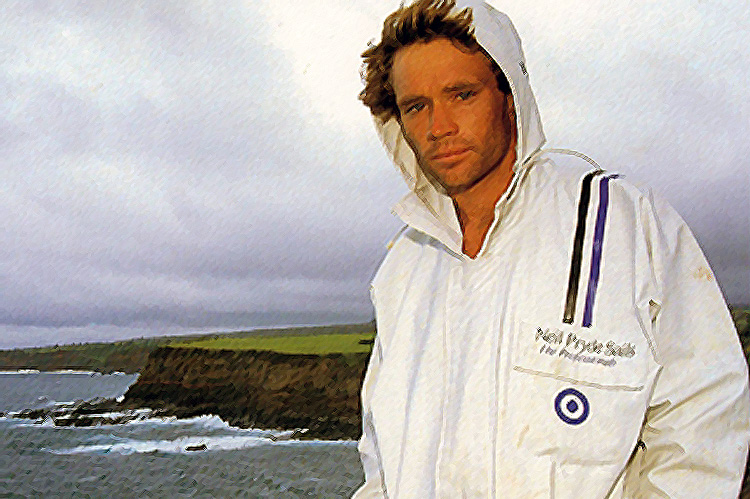Mike Waltze lives and breathes Hawaii. The surfer-cinematographer who directed "That First Glide" was one of the first surfers to take on Jaws and ride waves using ram air kites.
Waltze was born in Port Beach, California, but he moved to Oahu, Hawaii, when he was still young.
He got into windsurfing in 1969, and three years later, he was already a proud owner of the iconic "Windsurfer."
A few years later, he met Robby Naish and Peter Cabrinha and started sailing with both of them.
Windsurfing was still in its early stages, and there weren't any professional athletes.
However, Waltze wanted to live his newly-found passion and became a windsurfing instructor in Maui.
Ho'okipa, My Love
One day, Mike was driving along Hana Highway when he saw something he couldn't believe - huge waves breaking outside at Ho'okipa Beach Park and howling winds invading the area.
Waltze immediately knew this was his place. And there was no one out there enjoying these pristine conditions.
Back in the day, the "Windsurfer" was a massive heavy weapon that didn't fit the conditions you usually get in Maui.
So Mike Waltze decided to introduce a few changes - foot straps on a 7-foot surfboard.
The idea was to merge the world of surfing and windsurfing. And that was only the beginning of a fast-paced period that would revolutionize the wind sport.
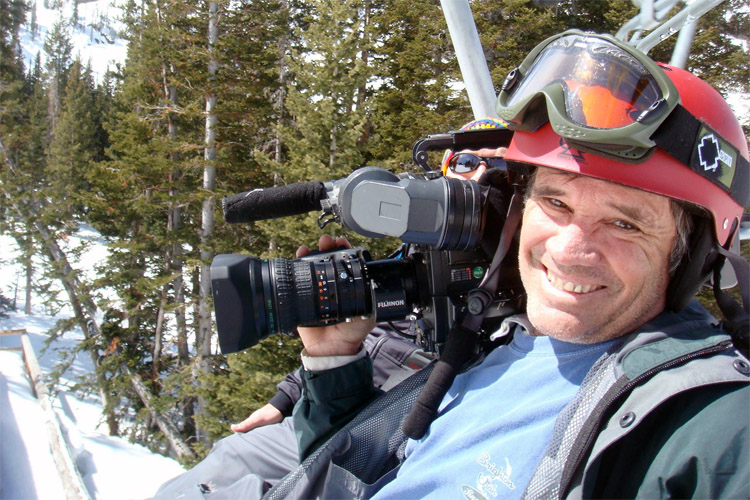
But for a long time, Mike Waltze was the only one out the back at Ho'okipa.
He regularly needed equipment changes, so he co-founded "Sailboards Maui," a windsurf shop that is still open for business.
Waltze's store sponsored the 1981 Maui Grand Prix, a wave sailing competition that became one of the most prestigious windsurfing competitions in the world, recently renamed Aloha Classic.
Mike went on to win five world windsurfing titles in multiple divisions, and he still considers himself a surfer just as much as a windsurfer.
In a way, with or without a sail, it's all about riding waves.
During the 1980s, Waltze and Laird Hamilton found a wave that simultaneously scared and attracted them.
A spot that would change watersports forever for its brutality and magnetic force.
Jaws And The Birth Of Tow-In Surfing
After watching and studying it for quite a while, Mike Waltze and his friends decided they wanted to open a new chapter at Pe'ahi/Jaws.
"To succeed riding Jaws, it was necessary to approach the trough of the wave at full speed while it was gaining in height and just before it broke," says Waltze.
"That was my reasoning at the time about the windsurfing activity. I was hoping not to sink in these huge masses of water."
They needed to get the windsurf board gliding fast across the water and ensure there was enough wind to keep it going.
Otherwise, the equipment would sink, and the windsurfer would wipe out in dangerous spots.
Waltze says that it is hard to describe what he felt after taking on Maui's liquid beast.
And on the same day, his friend Laird Hamilton opened a new chapter in wave riding by getting towed into a huge Sunset Beach wave using a rope attached to a zodiac.
Tow-in surfing had been invented, even if jet skis were still not allowed in Hawaiian waters for surfing purposes.
Both watermen talked about their stunts and discussed the details that could make the experience better and less dangerous.
From that moment on, windsurfing and surfing entered new frontiers.
The Birth of Kiteboarding
While Hamilton and Waltze were innovating in their favorite fields, kiteboarding made its first appearance in the line-up.
But there were still some problems to overcome, especially in the upwind and safety departments.
"One day, at the beginning of the 1990s, Laird and I were in Ho'okipa when we saw a hang glider that was towing a man equipped with some water skis and who was able to do so upwind," recalls Waltze.
"Laird said to me: 'We need something like that.' This man that we saw was Cory Roeseler. Cory and his father had patented this exciting technology that we quickly tried."
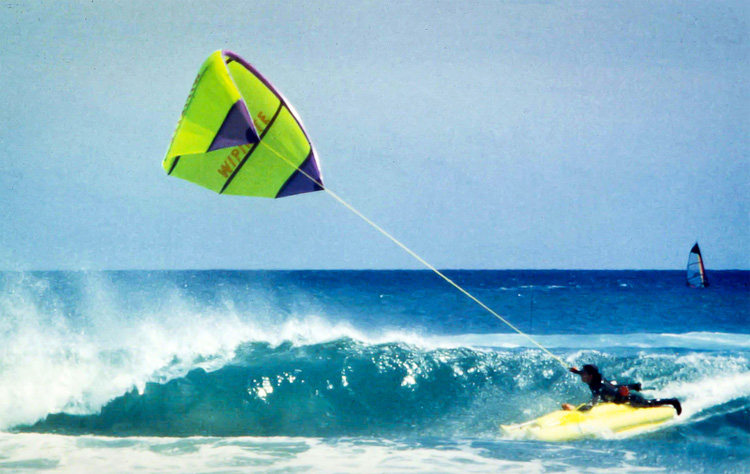
The equipment was still in its early stages.
The kite bar was heavy, and whenever the kite fell in the water, they had to rewind the lines on the bar using a complex and tricky disk system.
The improvements were good, but there was still a lot of work to do. Laird and Waltze wanted a kite that could be relaunched once it had fallen into the water.
Manu Bertin was excited about the idea and determined to find what they needed to make it work.
The solution was in Europe, more precisely in France.
Emmanuel Bertin brings Legaignoux's kite Wipika to Hawaii, and it's immediately game on.
By 1994, the world of windsurfing, surfing, and kiteboarding was being pushed forward like never before.
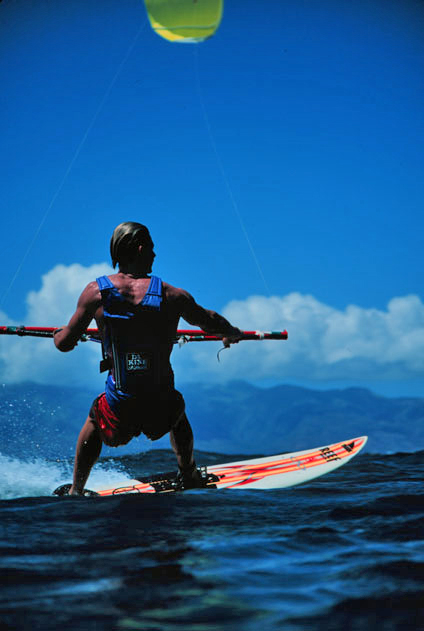
The First Kitesurfing Competition
Mike Waltze organized the first kiteboarding competitions between 1997 and 1998.
One of the earliest contests was taken out by Robby Naish and Marcus "Flash" Austin, a rider from Florida who had started with a ram air kite and a skimboard.
Naish fell in love with kitesurfing and quickly became a reference in and out of the water.
His riding skills never stopped evolving, but the new sport also meant a striving business.
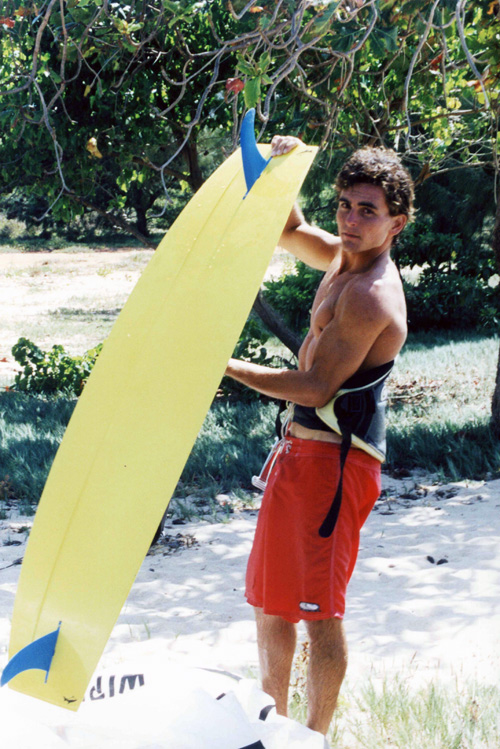
Lou Wainman was also a pivotal figure and brought wakeboarding into kiteboarding.
Mike Waltze went on to become an accomplished kiteboarder and later put on the Red Bull King of the Air, which is still one of the most popular kiteboarding competitions in the world.
The story of Mike Waltze and his involvement in the birth of kiteboarding is featured in "Kitesurf: Du Rêve À La Réalité."
